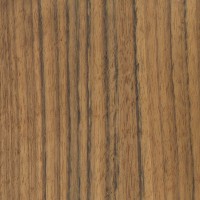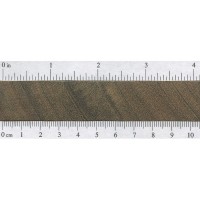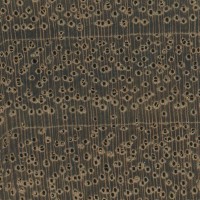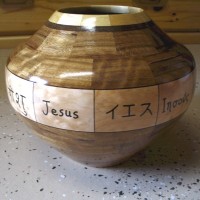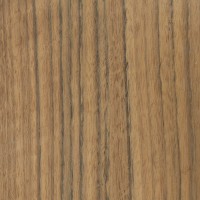 |
Common Name(s): Amazique, Amazoue, Mozambique, Ovangkol, Shedua Scientific Name: Guibourtia ehie Distribution: Tropical west Africa Tree Size: 100-150 ft (30-45 m) tall, 3-5 ft (1-1.5 m) trunk diameter Average Dried Weight: 51 lbs/ft3 (825 kg/m3) Specific Gravity (Basic, 12% MC): .67, .82 Janka Hardness: 1,330 lbf (5,900 N) Modulus of Rupture: 20,350 lbf/in2 (140.3 MPa) Elastic Modulus: 2,701,000 lbf/in2 (18.6 GPa) Crushing Strength: 9,320 lbf/in2 (64.2 MPa) Shrinkage: Radial: 4.3%, Tangential: 8.3%, Volumetric: 12.1%, T/R Ratio: 1.9 |
Color/Appearance: Varying shades of yellowish to reddish brown with darker brown, gray, or black stripes. Moderately wide sapwood is a pale yellow, clearly demarcated from heartwood. Sometimes seen with a curly or mottled grain pattern.
Grain/Texture: Grain is straight to slightly interlocked. Medium to coarse texture, with moderate natural luster.
Endgrain: Diffuse-porous; large pores, very few to few; solitary and radial multiples of 2-3; deposits occasionally present; growth rings distinct due to marginal parenchyma and slight decrease in pore frequency near growth ring borders; parenchyma vasicentric, lozenge, confluent, and marginal; narrow to medium rays, normal spacing.
Rot Resistance: Rated as moderately durable, with good resistance to insect attack.
Workability: Overall a fairly easy wood to work, though Ovangkol contains silica and can therefore dull cutters prematurely. Also, if the grain is interlocked, or if there is other figure present in the wood, planing and other machining operations may be troublesome and cause tearout. Turns, glues and finishes well.
Odor: Ovangkol is reported to have a strong unpleasant odor when wet, which disappears once the wood has dried.
Allergies/Toxicity: Besides the standard health risks associated with any type of wood dust, no further health reactions have been associated with Ovangkol. See the articles Wood Allergies and Toxicity and Wood Dust Safety for more information.
Pricing/Availability: Good availability for both lumber and veneer. Unfigured wood is in the mid-range of imported hardwoods, though curly or figured wood is likely to be more expensive.
Sustainability: This wood species is not listed in the CITES Appendices, and is reported by the IUCN as being a species of least concern.
Common Uses: Veneer, furniture, cabinetry, turned objects, musical instruments, and flooring.
Comments: This wood wins the award for the most commonly-used aliases, with no single name being predominant. When used in guitars, it’s most commonly referred to as Ovangkol. Most other woodworkers favor either Shedua or Amazique, while veneer is sometimes sold under the name Mozambique. All refer to the same wood species: Guibourtia ehie.
Scans/Pictures: The turned image is a segmented vessel consisting of Ovangkol for the body, with Quilted Maple, Wenge, and Yellowheart.


